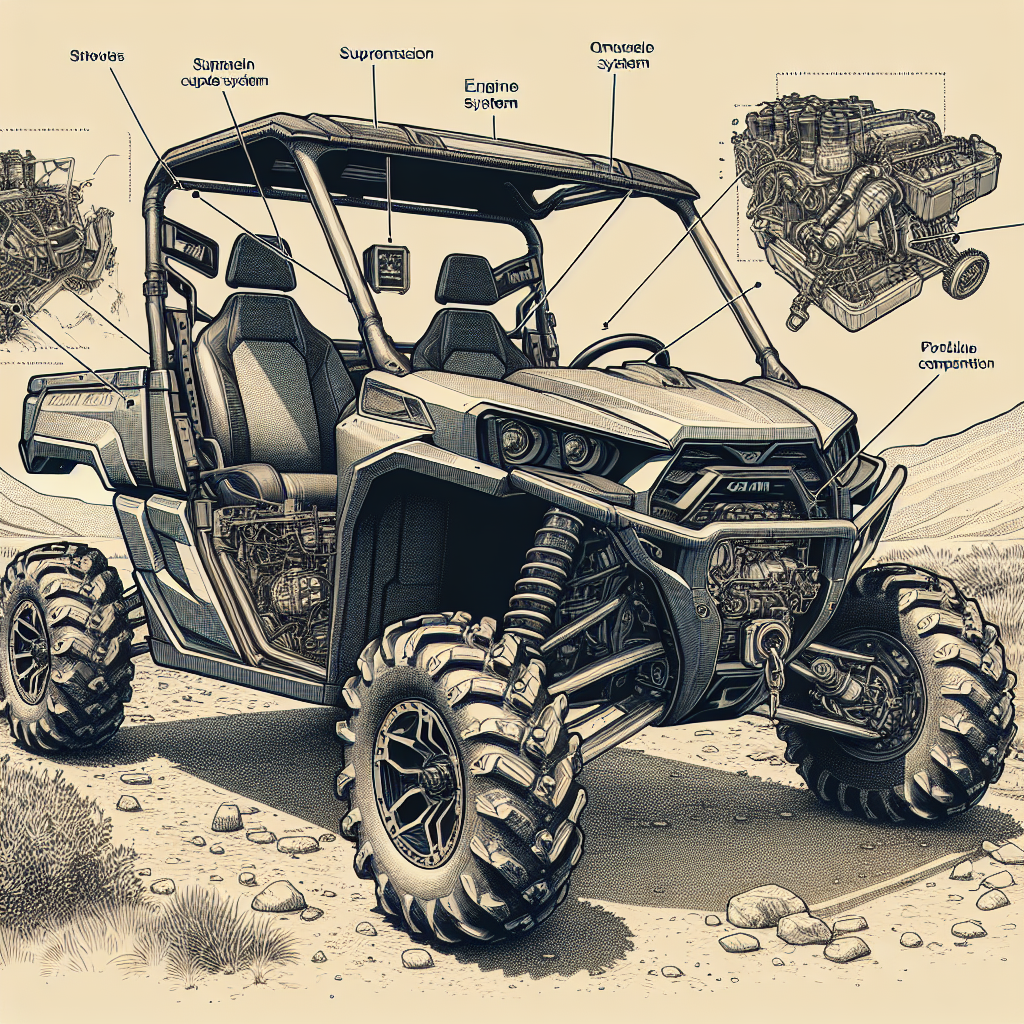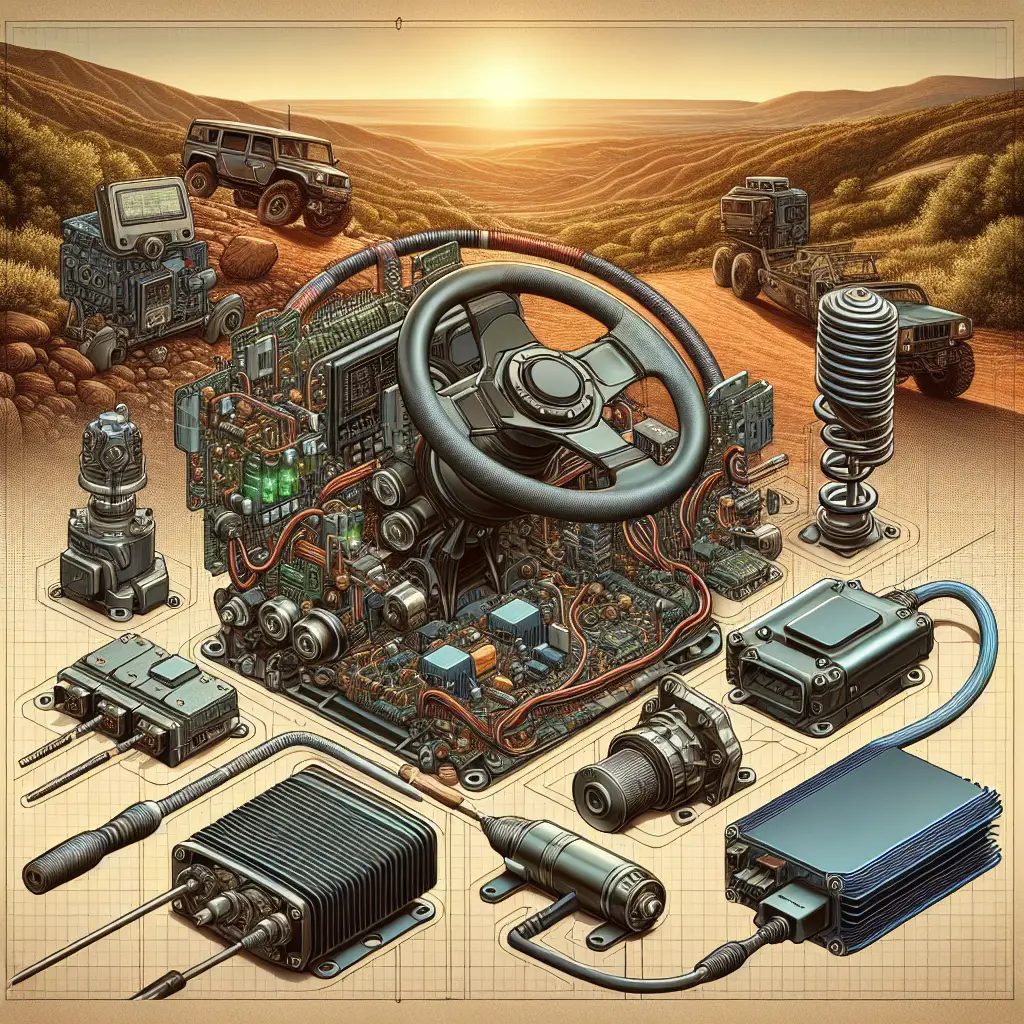The Kawasaki Mule 4010 is a versatile and powerful utility vehicle that’s widely used for a range of tasks, from agricultural work to hunting. Known for its durability and reliability, this UTV can, however, encounter various issues during its lifespan, similar to any mechanical machine. Owners often report problems ranging from transmission glitches to fuel system disruptions, which can affect the Mule 4010’s performance. Addressing these challenges promptly can ensure your vehicle runs smoothly and efficiently.
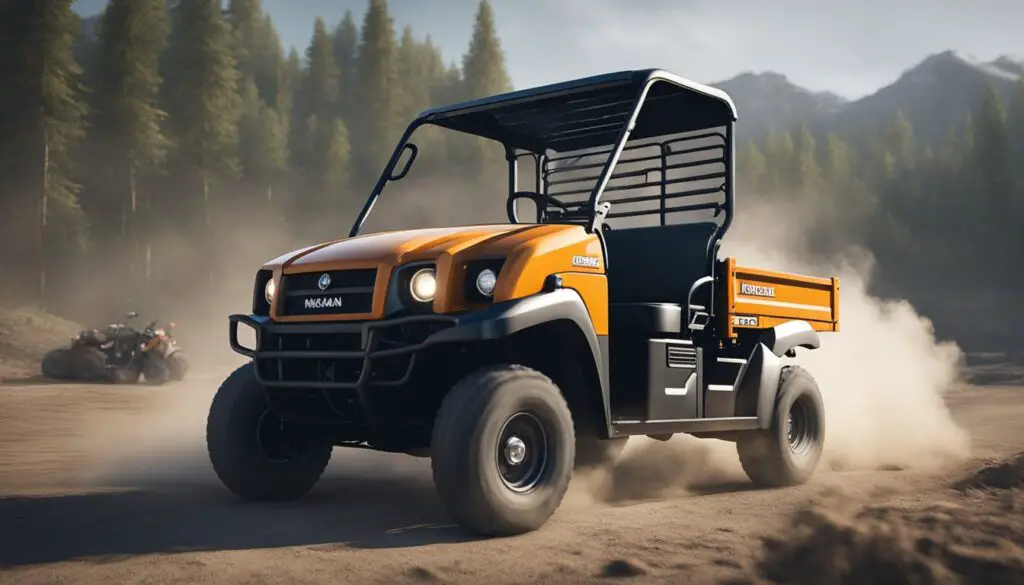
Understanding the common problems associated with the Kawasaki Mule 4010 is crucial for effective troubleshooting and maintenance. Mechanical concerns often involve the engine, electrical system, and gear shifting, while operational challenges may pertain to difficulty in starting the vehicle or unexpected power losses. To tackle these issues, familiarizing yourself with potential solutions, maintenance best practices, and when to seek professional help is vital. Doing so not only extends the life of your Mule 4010 but also enhances its performance in various working conditions.
Key Takeaways
- Familiarize with common issues to keep your Kawasaki Mule 4010 running smoothly.
- Effective maintenance involves understanding potential solutions and best practices.
- Regular troubleshooting can extend the vehicle’s lifespan and optimize performance.
Understanding Kawasaki Mule 4010
In this section, you’ll get acquainted with the history and foundational features of the Kawasaki Mule 4010, which sheds light on its significance as an off-road utility vehicle.
History and Overview
The Kawasaki Mule 4010 is a highly regarded Utility Task Vehicle (UTV) that’s become synonymous with durability and versatility in the off-road vehicle market. It was designed by Kawasaki to serve a variety of roles, from recreation to work tasks, combining ruggedness with practical functionality.
Design and Utility Features
Design Highlights:
- Engine: Powered by a robust and reliable liquid-cooled, V-twin engine.
- Transmission: Offers continuously variable transmission (CVT) with selectable 2- or 4-wheel drive for enhanced traction on diverse terrains.
Utility Features:
- Cargo Capacity: Equipped with a sizable tilting cargo bed designed for efficient load carrying.
- Seating: Comes standard with bench seats to accommodate multiple passengers.
- Practicality: Functions well across multiple environments, be it farms, industrial sites, or recreational trails, thanks to its sturdy construction.
Your Kawasaki Mule 4010 packs a punch with its strong frame and versatile design, making it a dependable companion for all your off-road adventures and work-related needs.
Common Mechanical Issues
Kawasaki Mule 4010 is a sturdy and reliable vehicle, but like any mechanical machine, it’s subject to wear and tear. Knowing the common mechanical issues can help you identify and solve problems more efficiently.
Engine Problems
Your Kawasaki Mule 4010 may sometimes struggle with engine overheating. This can be caused by a buildup of debris or a malfunctioning cooling system. Symptoms include a hot engine and possibly smoke. Regular maintenance, such as cleaning the radiator and ensuring the coolant level is adequate, can prevent these issues.
Transmission Challenges
Transmission problems can manifest as difficulty in shifting gears or unusual noises like chattering from the front differential. Causes might include a worn clutch or damaged transmission components. Signs of transmission challenges include:
- Inability to engage certain gears
- Unusual sounds during gear shifts
Read more: Kawasaki Mule Transmission Problems: Tips, Tricks & More
Fuel System Complications
The fuel pump and fuel injection system are crucial for your Mule’s performance. Fuel pump issues often stem from clogged fuel filters preventing adequate fuel flow. If your Mule is starved for fuel, it might experience power loss or fail to start. Signs to look out for include:
- Sputtering engine
- Engine stalling at high temperatures
Electrical Concerns
Lastly, electrical problems might range from faulty battery terminals to a malfunctioning ignition coil. Weak or no start can be a symptom of battery issues, while intermittent stalling may point to ignition coil failure. Regular checks of the battery and its connection points can help preempt electrical concerns.
Specific Part Difficulties
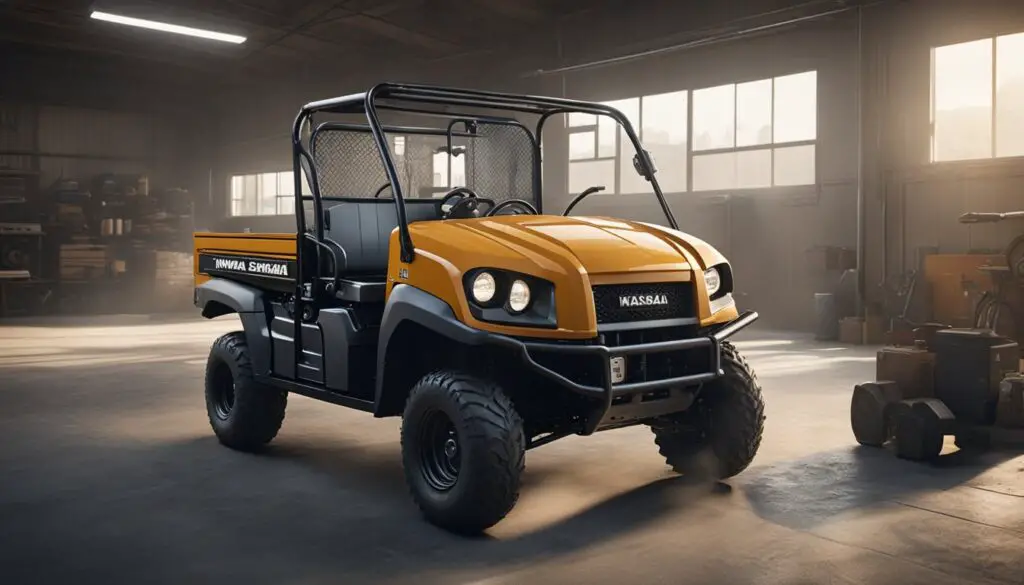
When considering the robustness of your Kawasaki Mule 4010, it’s important to be aware of several component-specific issues that can crop up. Here’s a breakdown of common part difficulties and their potential fixes.
Throttle Body and Sensor Troubles
Your Mule’s throttle body can accumulate dirt over time, warranting a thorough cleaning with a throttle body cleaner to maintain optimal performance. Similarly, a malfunctioning sensor could lead to erratic engine behavior. If you encounter sensor problems, checking for damage and ensuring connections are secure is a good first step.
- Solutions:
- Clean the throttle body regularly.
- Inspect sensors and replace if damaged.
Fuel Pump and Filter Woes
The fuel pump works in tandem with the fuel filter to supply your engine with fuel. However, pump problems are not uncommon. Instances of clogging due to dirt and debris in the filter can starve the pump and, in turn, the engine of fuel. Regularly replacing the fuel filter can prevent this issue.
- Check and Fix:
- Inspect and replace the fuel filter periodically.
- Evaluate the fuel pump’s condition and replace if necessary.
Braking System Flaws
The braking system is vital for safety, and worn brake pads can diminish stopping power. This is particularly crucial for the front and rear brakes, which should be checked periodically for wear and tear.
- Maintenance Tips:
- Replace brake pads when they show significant wear.
- Inspect the entire braking system for leaks or damage.
Cooling System Obstacles
Your Mule’s engine relies on a cooling system to prevent overheating. A low coolant level is a common cause of temperature issues and can be resolved by topping off the coolant. Regular checks can help you catch leaks early before they lead to bigger problems.
- To Do:
- Monitor coolant levels and replenish as needed.
- Check for and address any leaks in the cooling system.
Troubleshooting and Maintenance
Maintaining your Kawasaki Mule 4010 involves routine checks and troubleshooting to prevent major problems. Regular care and accurate diagnostics ensure a smooth-running vehicle.
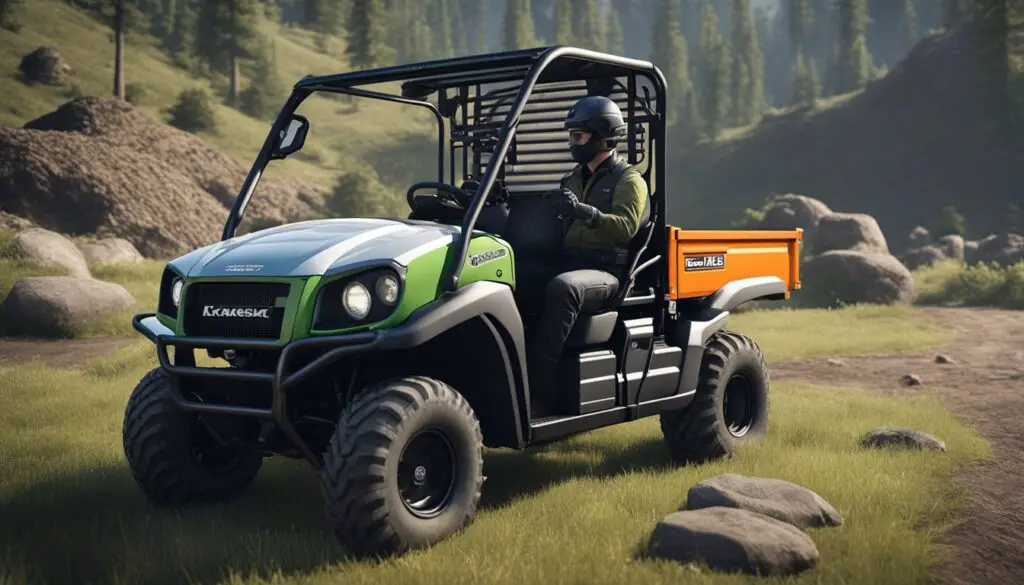
Diagnostic Steps
To diagnose issues with your Mule 4010, start by checking the Diagnostic Fault Indicator (DFI) light on the dashboard, which can alert you to various malfunctions. If the light is on, a scan with a compatible diagnostic tool can reveal error codes from the Electronic Control Unit (ECU). For fuel system concerns, like a faulty fuel pump or clogged fuel injectors, you’ll need to verify the fuel pressure. If you’re experiencing idling or throttle body issues, inspect the throttle body and sensor for cleanliness and proper connection.
- Fuel System:
- Check fuel filter for blockage; replace if necessary.
- Inspect the fuel pump operation; the pump should not make excessive noise or have low pressure.
- Ignition System:
- Examine spark plugs for signs of wear or fouling; replace as needed.
- Charging System:
- Test the battery and ensure the charging system is providing sufficient power.
Regular Care Procedures
Regular maintenance keeps your Mule 4010 in peak condition. Always monitor fluid levels; low levels can indicate leaks or consumption that requires attention. Things to check often:
- Fluid Levels:
- Transmission fluid level: Should be within the recommended range.
- Oil levels: Check for oil vapors and contamination.
- Air Filter:
- Clean or replace the air filter regularly to prevent clogging.
- General Inspection:
- Keep an eye on hoses and electrical wirings for signs of wear or damage.
By establishing a routine of regular maintenance and prompt repairs, your Mule 4010 will serve you reliably for years to come. Remember, you’re the first line of defense against small issues turning into costly repairs.
Operational Challenges
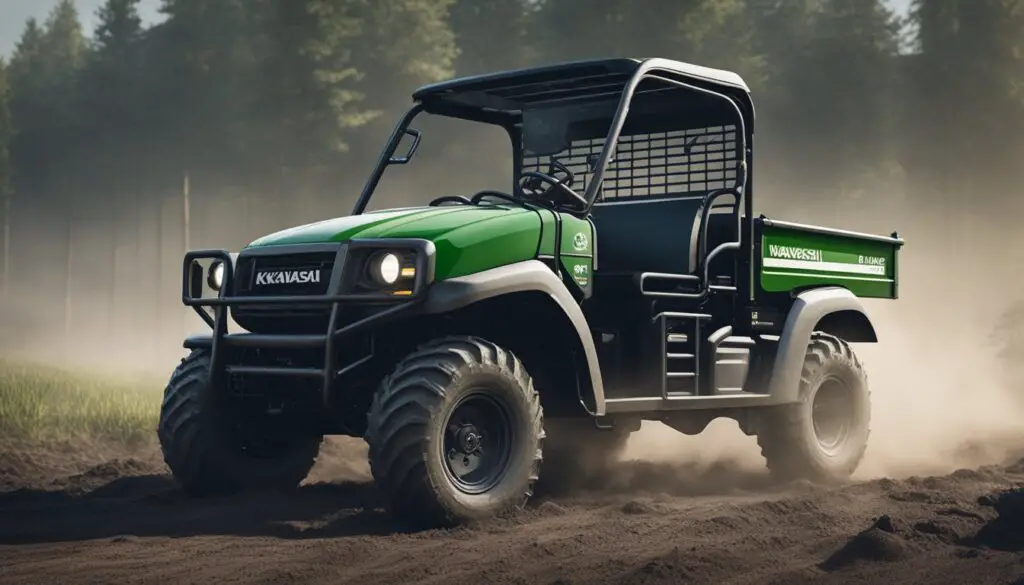
When operating your Kawasaki Mule 4010, you might encounter a few challenges that can affect its performance. These issues can range from starting and idling oddities to on-field driving problems and even transmission usage concerns.
Starting and Idling Anomalies
Your Mule 4010 may sometimes struggle to start or exhibit idling issues. These could stem from:
- Difficulty Starting the Engine: Blocked injectors or a defective fuel pump can prevent your engine from starting smoothly.
- Idling Issues: If the throttle body is recalled, you may notice erratic engine idling.
On-Field Driving Problems
While driving on the field, you might face:
- Loss of Engine Power: This can occur without warning and may be related to electrical malfunctions, making your rides unpredictable.
- Electrical Power Trouble: Any loss of electrical power could impact the efficiency of your Mule 4010, affecting both driving performance and onboard systems.
Transmission Usage Concerns
Lastly, transmission concerns can disrupt your driving experience with:
- Shifting Problems: Gear shifting could be inconsistent, potentially due to sporadic transmission errors.
- Recommended Speed Ranges: Be cautious of the speed ranges for high or low gear to avoid transmission or belt issues. Use low gear if you’re going 10 mph or slower and high gear for speeds above 10 mph.
By understanding and addressing these operational challenges, you can ensure that your Kawasaki Mule 4010 remains a reliable asset for your work or recreation.
Potential Solutions and Fixes
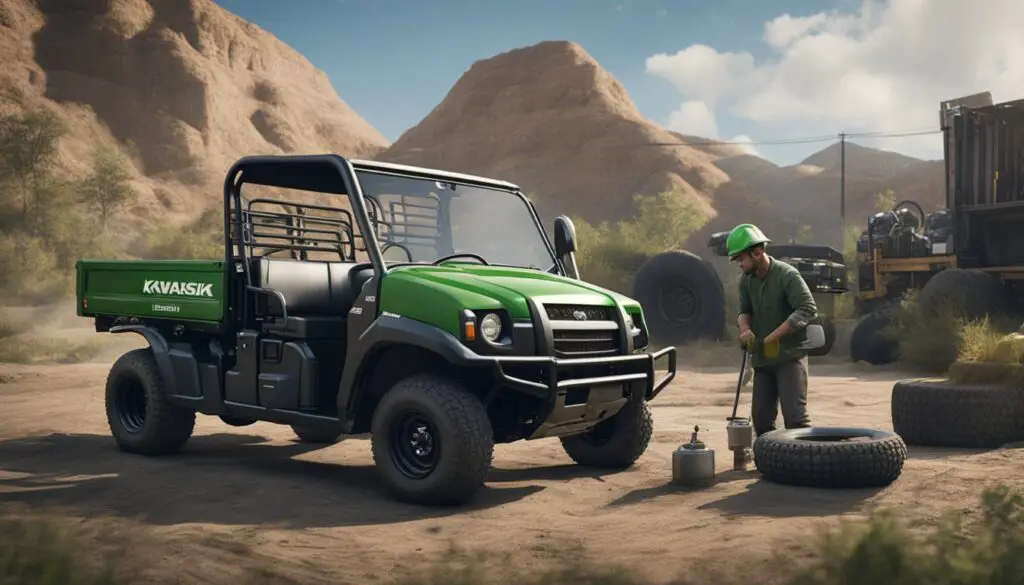
When you encounter issues with your Kawasaki Mule 4010, knowing the right fixes can save your time and extend the life of your vehicle. This section will guide you through targeted solutions for engine and transmission troubles, fuel and electrical system improvements, and methods to handle overheating and miscellaneous issues effectively.
Addressing Engine and Transmission
Your Kawasaki Mule 4010’s engine and transmission are crucial for reliable operation. If you’re experiencing loss of engine power or transmission issues, consider these steps:
- Check and replace transmission fluid: Regularly inspect your transmission fluid levels and quality. If the fluid is dirty or low, replace it to ensure smooth shifting and operation.
- Clean or replace fuel filters: Clogged fuel filters can lead to reduced fuel efficiency. Make sure they are clean to maintain proper fuel flow.
Improving Fuel and Electrical Systems
Fuel and electrical systems are integral to the performance of your Mule 4010. Here’s how you can address common issues:
- Investigate DFI light problems: If your Digital Fuel Injection (DFI) light is on, consult the manual to understand the codes for appropriate fixes.
- Resolve fuel pump issues: Symptoms of a faulty fuel pump include hard starting and power loss. If issues are prevalent, replacing the fuel pump may be necessary for reliability.
Dealing with Overheating and Other Issues
Overheating can lead to more serious problems if not dealt with promptly:
- Monitor and maintain coolant levels: Ensure your coolant is at the right level and not expired to prevent your Mule 4010 from going into limp mode due to overheating.
- Electrical power loss: Tighten battery connections and check the battery’s charge to avoid unexpected power losses. If frequent electrical issues persist, a professional diagnostic might be required.
By following these solutions, you’ll be able to tackle most of the common problems with your Kawasaki Mule 4010 and keep it running in peak condition.
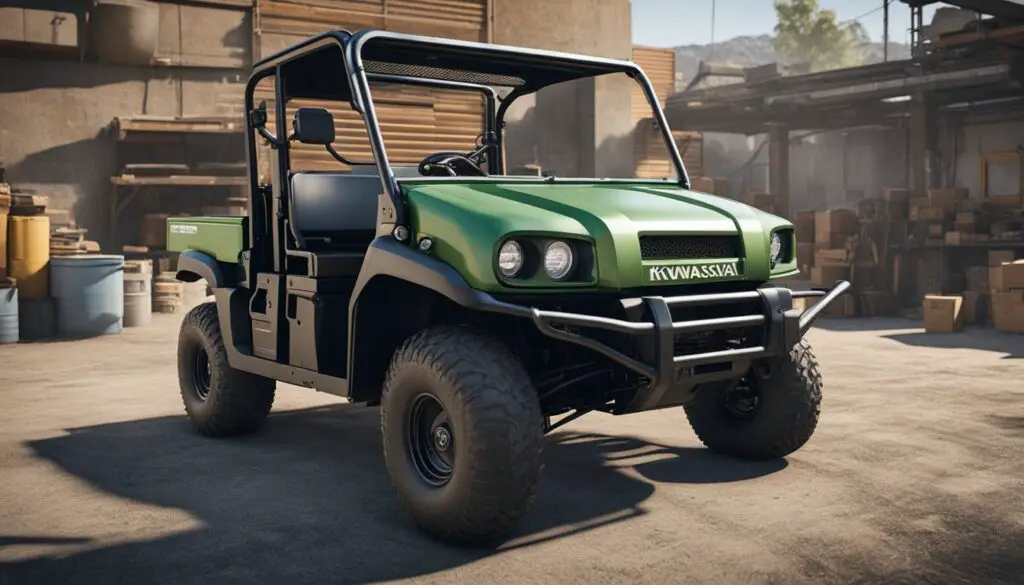
Preventive Measures and Best Practices
To ensure the longevity and optimal performance of your Kawasaki Mule 4010, incorporating routine preventive care is crucial. By taking proactive steps, you can spot warning signs early and address potential issues before they escalate.
Routine Inspection and Care
Regular Maintenance: You should regularly check and replace the air filter and fuel filters to prevent carbon buildup and maintain engine performance. Keep an eye on the battery condition to avoid unexpected power loss.
- Use a throttle body cleaner to ensure the throttle body is free of oil vapors and grime.
- Check the transmission fluid level and look for signs of leakage, which could indicate a need for more frequent replacement.
Warning Signs and Visual Checks: Be vigilant for any reduced power or trouble with gear shifting, as these may indicate a problem such as a damaged drive belt. Regular visual inspections will help you catch issues such as worn brake pads or irregular tire wear early on.
Replacing Parts and Upkeep
Keeping Components Fresh: Use the right grade of engine oil and regularly check its level to ensure smooth engine operation. Over time, factors like heat and stress can degrade engine components.
- Replace brake pads before they get too worn to maintain effective braking power.
- Inspect the drive belt for wear and tear, and replace it if you find it damaged to avoid gear shifting issues.
Being Proactive: When performing maintenance, always take the chance to clean all accessible parts, and ensure bolts and connections are tight to avoid rattles or unexpected component dislodgement.
Remember, keeping up with the upkeep not only makes your Mule 4010 more reliable but could also mean fewer repair bills in the future.
Conclusion
Addressing problems with your Kawasaki Mule 4010 promptly is key to maintaining its performance and longevity. Familiarize yourself with potential issues and their fixes to prevent or quickly resolve them.
- Electrical System: Keep an eye on your vehicle’s electrical health and address any flickers or inconsistencies.
- Seals and Gaskets: Regularly inspect seals for wear and tear to avoid leaks.
- Transmission: Notice any shifting irregularities? Don’t ignore them; they may require attention to your transmission.
If you experience a sluggish acceleration or hear unusual sounds, your drive belt could be damaged. Proper care and timely interventions can significantly prolong the life of the belt and transmission.
- Fuel System: A clogged fuel filter can impact performance. Regularly check and replace it as needed.
Your Mule is a sturdy companion, but it does have its share of common issues. Keep your vehicle clean, particularly from trail debris that could damage mechanical components, and always follow up on regular maintenance checks. When in doubt, engage with forums or seek professional help. Your efforts will pay off in reliable rides and adventures on your Kawasaki Mule 4010.
Frequently Asked Questions
The Kawasaki Mule 4010 is a versatile utility vehicle, but like any machine, it may encounter problems. This section guides you through common questions and issues you may face, providing straightforward troubleshooting tips and maintenance advice.
What troubleshooting steps can I take if my Mule 4010 won’t start?
If your Mule 4010 won’t start, check the battery connections for corrosion and ensure it’s fully charged. If the battery is fine, inspect the fuel system for blockages and examine the spark plugs for fouling.
How can I resolve overheating issues in my Kawasaki Mule 4010?
Overheating can be due to a clogged radiator or a malfunctioning thermostat. Make sure the coolant is at the correct level and the radiator is free from debris. If necessary, replace the thermostat.
What should I do if I’m experiencing power loss in my Mule 4010 during operation?
Power loss during operation can often be attributed to a clogged air filter or fuel filter. Ensure both filters are clean and replace them if they are worn out. Also, check the fuel pump for proper operation.
How do I address electrical problems in my Kawasaki Mule 4010?
Electrical issues often stem from a faulty battery or bad connections. Inspect all electrical connections, including fuses and relays, and ensure the battery is holding a charge. Replace any worn or corroded components.
What are some known issues with the DFI system in Kawasaki Mule 4010 models?
The DFI (Digital Fuel Injection) light may indicate issues with the throttle body or sensors. Check for error codes and clean the throttle body. If the problem persists, sensor replacement may be required.
What maintenance tips can help prevent common issues with the Kawasaki Mule 4010?
Regular maintenance, such as changing the oil, checking fluid levels, and replacing air and fuel filters, can help prevent issues. Additionally, regular inspections of the brakes, tires, and suspension will keep your Mule 4010 running smoothly.

